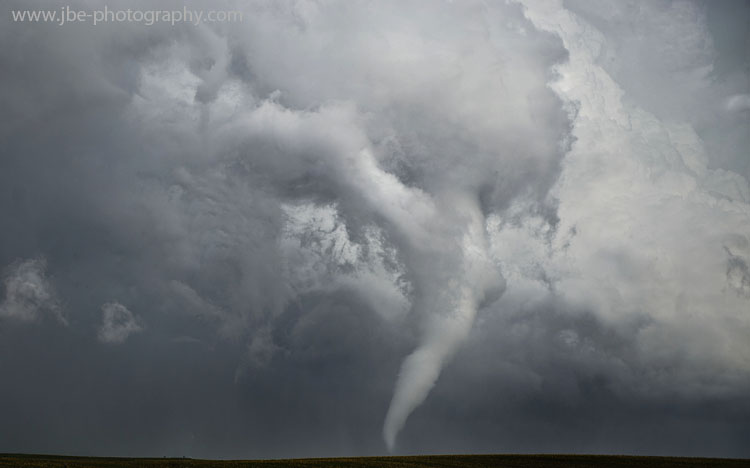Kevin Norton
EF0
- Joined
- Jun 4, 2011
- Messages
- 15
Hey All,
This is my first post on the site.I had been deep into meteorology when I was younger, but have been largely out of the wx loop for the last 25 years.So I am getting back into to groove and trying to learn what's been discovered more recently.
I was wondering about tornado height above the cumulonimbus ceiling,especially for the larger boys at EF-3 or EF-4.
Maybe someone could provide a basic primer on the flow field involved (other than the basic overall MESO scale cyclonic rotation of the the CB itself).I know that there are other factors involved like (rear flank?) downdraft and inflow updrafts (other than a ,on my part perceived, possible gradual corkscrew upflow of the entire outer portion of the CB itself).
My grasp of the latest tornadic theory is weak ( at an EF- 1, ha, ha).So any help in in explanation as a "Tornado Flow Dynamics 101" is appreciated.
I am fairly sure that (upper EF) tornadoes generally form at the edge of the CB and NOT at the axial point of the mesocyclone. Therefore I would THINK that the actual tornadic rotation would eventually lose it's definition during its journey upward and get "washed out" into the larger mesocyclonic impetus or other interior flow structures. I can't see a full rotation being maintained ALL the way up to top of the CB,but maybe to around half way up (20,000 ft ?? ).
This runs counter to a photo provided by a meteorology teacher I had seen many years ago while I was in the USAF .It shows a small but very clear EYE when looking down onto a CB top ( the eye was similar to a hurricane's) . I'm unsure whether it was taken by a very high altitude recon aircraft or by satellite.The eye was supposedly being caused by a major tornado on the ground.I would like comments as to whether this could ever occur or whether this photo was somehow in error.
As gee whiz, I had been a 10 year volunteer at the NWS Blue Hill Climate Research Station, Milton ,MA and have taken a few basic wx courses years ago. I am also a private pilot and FWIW once saw a good display of a funnel while flying.
Any input or help is greatly appreciated,Thanks,
Kevin Norton
This is my first post on the site.I had been deep into meteorology when I was younger, but have been largely out of the wx loop for the last 25 years.So I am getting back into to groove and trying to learn what's been discovered more recently.
I was wondering about tornado height above the cumulonimbus ceiling,especially for the larger boys at EF-3 or EF-4.
Maybe someone could provide a basic primer on the flow field involved (other than the basic overall MESO scale cyclonic rotation of the the CB itself).I know that there are other factors involved like (rear flank?) downdraft and inflow updrafts (other than a ,on my part perceived, possible gradual corkscrew upflow of the entire outer portion of the CB itself).
My grasp of the latest tornadic theory is weak ( at an EF- 1, ha, ha).So any help in in explanation as a "Tornado Flow Dynamics 101" is appreciated.
I am fairly sure that (upper EF) tornadoes generally form at the edge of the CB and NOT at the axial point of the mesocyclone. Therefore I would THINK that the actual tornadic rotation would eventually lose it's definition during its journey upward and get "washed out" into the larger mesocyclonic impetus or other interior flow structures. I can't see a full rotation being maintained ALL the way up to top of the CB,but maybe to around half way up (20,000 ft ?? ).
This runs counter to a photo provided by a meteorology teacher I had seen many years ago while I was in the USAF .It shows a small but very clear EYE when looking down onto a CB top ( the eye was similar to a hurricane's) . I'm unsure whether it was taken by a very high altitude recon aircraft or by satellite.The eye was supposedly being caused by a major tornado on the ground.I would like comments as to whether this could ever occur or whether this photo was somehow in error.
As gee whiz, I had been a 10 year volunteer at the NWS Blue Hill Climate Research Station, Milton ,MA and have taken a few basic wx courses years ago. I am also a private pilot and FWIW once saw a good display of a funnel while flying.
Any input or help is greatly appreciated,Thanks,
Kevin Norton

